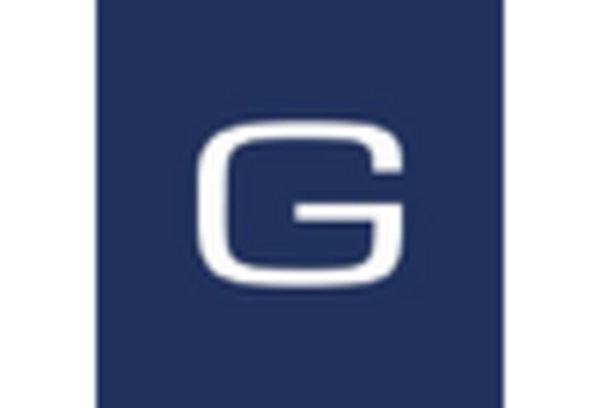Integration of Advanced Analytics
The integration of advanced analytics into mobile resource management solutions is transforming the Mobile Resource Management Market. Organizations are increasingly leveraging data analytics to gain insights into resource utilization and operational performance. By analyzing data patterns, businesses can identify inefficiencies and optimize resource allocation. Recent findings indicate that companies utilizing advanced analytics can achieve a 15% improvement in resource utilization rates. This trend underscores the importance of data-driven decision-making in enhancing operational efficiency, thereby driving the growth of the Mobile Resource Management Market.
Rising Adoption of Mobile Technologies
The proliferation of mobile technologies significantly influences the Mobile Resource Management Market. With the advent of smartphones and tablets, businesses are increasingly adopting mobile applications to manage resources effectively. This shift enables real-time communication and data access, enhancing decision-making processes. Recent statistics indicate that mobile resource management solutions can improve workforce productivity by approximately 30%. As organizations recognize the potential of mobile technologies to streamline operations, the demand for mobile resource management solutions is expected to rise, further driving the growth of the Mobile Resource Management Market.
Increased Demand for Fleet Optimization
The Mobile Resource Management Market experiences a notable surge in demand for fleet optimization solutions. Companies are increasingly seeking ways to enhance operational efficiency and reduce costs associated with fleet management. According to recent data, organizations utilizing mobile resource management solutions can achieve up to a 20% reduction in fuel consumption and a 15% decrease in maintenance costs. This trend is driven by the need for real-time tracking and management of resources, which allows businesses to make informed decisions. As competition intensifies, the emphasis on optimizing fleet operations becomes paramount, thereby propelling the growth of the Mobile Resource Management Market.
Expansion of E-commerce and Delivery Services
The expansion of e-commerce and delivery services significantly impacts the Mobile Resource Management Market. As online shopping continues to grow, businesses are seeking efficient ways to manage their delivery fleets and logistics operations. The demand for timely and reliable delivery services necessitates the adoption of mobile resource management solutions. Recent market analysis reveals that the e-commerce sector is projected to grow by over 20% annually, further fueling the need for effective resource management. This trend highlights the critical role of mobile resource management in supporting the logistics and delivery needs of the evolving marketplace.
Growing Emphasis on Compliance and Safety Regulations
The Mobile Resource Management Market is witnessing a heightened focus on compliance and safety regulations. As industries face stricter regulatory requirements, organizations are compelled to adopt mobile resource management solutions to ensure adherence to safety standards. This trend is particularly evident in sectors such as transportation and logistics, where compliance with regulations can significantly impact operational efficiency. Data suggests that companies implementing mobile resource management systems can reduce compliance-related penalties by up to 25%. Consequently, the need for effective compliance management is likely to propel the growth of the Mobile Resource Management Market.

















Leave a Comment